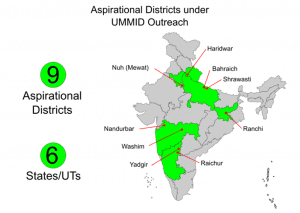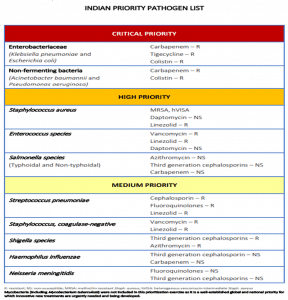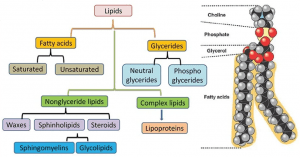Day-524
Quiz-summary
0 of 5 questions completed
Questions:
- 1
- 2
- 3
- 4
- 5
Information
To attempt the Quiz, simply click on START Button.
You have already completed the quiz before. Hence you can not start it again.
Quiz is loading...
You must sign in or sign up to start the quiz.
You have to finish following quiz, to start this quiz:
Results
0 of 5 questions answered correctly
Your time:
Time has elapsed
You have reached 0 of 0 points, (0)
| Average score |
|
| Your score |
|
Categories
- Not categorized 0%
- 1
- 2
- 3
- 4
- 5
- Answered
- Review
-
Question 1 of 5
1. Question
2 points1. With reference to the congenital and hereditary genetic diseases, consider the following statements:
1. The prevalence of genetic disorders increases because consanguineous marriage is favored in many communities.
2. The UMMID initiative is designed to treat genetic disorders and it is based on the concept of ‘Prevention is better than Cure’.
3. This initiative has established National Inherited Diseases AdministratioN (NIDAN) Kendras in all Aspirational Districts.
How many of the statements given above are correct?Correct
Answer: B
Explanation:
Statement 1 is correct: Congenital and hereditary genetic diseases are a significant health burden in India, and hence there is a need for adequate and effective genetic testing and counselling services. In India’s urban areas, congenital malformations and genetic disorders are the third most common cause of mortality in newborns. With a very large population with high birth rate, and consanguineous marriage favored in many communities, prevalence of genetic disorders is high in India. Considering these facts, the Department of Biotechnology (DBT), GoI has started the Unique Methods of Management and Treatment of Inherited Disorders (UMMID) Initiative.
The whole initiative is designed on the concept of ‘Prevention is better than Cure’. The diagnostic tests for many of the genetic disorders available in India are at a relatively nascent stage. While antenatal diagnostics for a few genetic diseases are available, these are available in very few hospitals.
Statement 3 is incorrect: Considering these facts, the Department, in the year 2019, launched the DBT-UMMID initiative with the objectives of establishing Genetic Diagnostic Units called National Inherited Diseases AdministratioN (NIDAN) Kendras in Government Hospitals, producing skilled clinicians in the area of Human Genetics (Biochemical Genetics, Cytogenetics, Molecular Genetics, Clinical Genetics and Comprehensive Clinical Care), and screening of pregnant women and newborn babies for diagnosis of inherited genetic diseases in aspirational districts to provide comprehensive clinical care.

Statement 2 is correct: The DBT-UMMID Initiative is designed on the concept of “Prevention is better than cure”, and is a step towards the use of cutting edge scientific technology and molecular medicine for extending Universal Health Coverage for all.UMMID is a significant contributor to the implementation of the National Policy for Rare Diseases, 2021. UMMID seeks to contribute to the infrastructure and human resource needs for management of genetic disorders, which account for 80% of rare disorders.
Objectives:
● Establishment of genetic diagnostic centres (NIDAN Kendras) in different parts of the country to provide patient care services.
● Improve the components of medical genetics training in medical education, preparing medical doctors of the twenty-first century for the era of molecular medicine.
● Create awareness about genetic disorders amongst clinicians and the general public, so that the patients and their families get appropriate diagnosis, management & preventive services for genetic disorders.
● Spread the reach of diagnostic facilities for rare genetic disorders, pharmacogenetics, prenatal diagnosis, and population-based screening for prevention.
● Contribute data for future research on rare or common genetic disorders.
Achievements: So far, more than 60000 beneficiaries have availed antenatal screening, while more than 33000 newborns have undergone screening for various genetic and rare disorders under the UMMID Initiative.
Hence, option B is correct.Incorrect
Answer: B
Explanation:
Statement 1 is correct: Congenital and hereditary genetic diseases are a significant health burden in India, and hence there is a need for adequate and effective genetic testing and counselling services. In India’s urban areas, congenital malformations and genetic disorders are the third most common cause of mortality in newborns. With a very large population with high birth rate, and consanguineous marriage favored in many communities, prevalence of genetic disorders is high in India. Considering these facts, the Department of Biotechnology (DBT), GoI has started the Unique Methods of Management and Treatment of Inherited Disorders (UMMID) Initiative.
The whole initiative is designed on the concept of ‘Prevention is better than Cure’. The diagnostic tests for many of the genetic disorders available in India are at a relatively nascent stage. While antenatal diagnostics for a few genetic diseases are available, these are available in very few hospitals.
Statement 3 is incorrect: Considering these facts, the Department, in the year 2019, launched the DBT-UMMID initiative with the objectives of establishing Genetic Diagnostic Units called National Inherited Diseases AdministratioN (NIDAN) Kendras in Government Hospitals, producing skilled clinicians in the area of Human Genetics (Biochemical Genetics, Cytogenetics, Molecular Genetics, Clinical Genetics and Comprehensive Clinical Care), and screening of pregnant women and newborn babies for diagnosis of inherited genetic diseases in aspirational districts to provide comprehensive clinical care.

Statement 2 is correct: The DBT-UMMID Initiative is designed on the concept of “Prevention is better than cure”, and is a step towards the use of cutting edge scientific technology and molecular medicine for extending Universal Health Coverage for all.UMMID is a significant contributor to the implementation of the National Policy for Rare Diseases, 2021. UMMID seeks to contribute to the infrastructure and human resource needs for management of genetic disorders, which account for 80% of rare disorders.
Objectives:
● Establishment of genetic diagnostic centres (NIDAN Kendras) in different parts of the country to provide patient care services.
● Improve the components of medical genetics training in medical education, preparing medical doctors of the twenty-first century for the era of molecular medicine.
● Create awareness about genetic disorders amongst clinicians and the general public, so that the patients and their families get appropriate diagnosis, management & preventive services for genetic disorders.
● Spread the reach of diagnostic facilities for rare genetic disorders, pharmacogenetics, prenatal diagnosis, and population-based screening for prevention.
● Contribute data for future research on rare or common genetic disorders.
Achievements: So far, more than 60000 beneficiaries have availed antenatal screening, while more than 33000 newborns have undergone screening for various genetic and rare disorders under the UMMID Initiative.
Hence, option B is correct. -
Question 2 of 5
2. Question
2 points2. Which of the following pathogens are part of the Indian Priority Pathogens List?
1. Non-fermenting bacteria
2. Salmonella species
3. Streptococcus pneumoniae
4. Shigella species
5. Haemophilus influenzae
How many of the above are correct?Correct
Answer: D
Explanation:
Antimicrobial resistance (AMR) is one of the top 10 global health threats faced by the world today and can have a major impact on the economy, society, food safety and public health. To address the issue of Antimicrobial Resistance, an Indian Priority Pathogen List has been developed by the WHO Country Office for India in collaboration with the Department of Biotechnology, Government of India. The Indian Priority Pathogens List has been developed to guide research, discovery and development of new antibiotics in India.
Hence, option D is correct.
 Incorrect
Incorrect
Answer: D
Explanation:
Antimicrobial resistance (AMR) is one of the top 10 global health threats faced by the world today and can have a major impact on the economy, society, food safety and public health. To address the issue of Antimicrobial Resistance, an Indian Priority Pathogen List has been developed by the WHO Country Office for India in collaboration with the Department of Biotechnology, Government of India. The Indian Priority Pathogens List has been developed to guide research, discovery and development of new antibiotics in India.
Hence, option D is correct.



-
Question 3 of 5
3. Question
2 points3. With reference to eSanjeevani, consider the following statements:
1. It is a national telemedicine service that aims for digital health equity to achieve Universal Health Coverage (UHC).
2. In the eSanjeevani system, AI chatbots provide teleconsultation services to patients.
3. It is a cloud-based telemedicine system.
How many of the statements given above are correct?Correct
Answer: B
Explanation:
Statement 1 is correct: eSanjeevani – National Telemedicine Service of India is a step towards digital health equity to achieve Universal Health Coverage (UHC). eSanjeevani facilitates quick and easy access to doctors and medical specialists from your smartphones. You can also access quality health services remotely via eSanjeevani by visiting the nearest Ayushman Bharat Health & Wellness Centre.
Statement 2 is incorrect: It provides two types of consultation processes i.e. patient to doctor telemedicine and assisted telemedicine. In both the types of Telemedicine consultation there is a virtual presence of a human doctor.
1. Patient to Doctor Telemedicine



2. Assisted Telemedicine



Statement 3 is correct: eSanjeevani is a cloud-based telemedicine system. It is accessible via an Internet connection from anywhere (in India) and any computing device. eSanjeevani allows users to create their Ayushman Bharat Health Account (ABHA) and use it to link and manage their existing health records.
Hence, option B is correct.Incorrect
Answer: B
Explanation:
Statement 1 is correct: eSanjeevani – National Telemedicine Service of India is a step towards digital health equity to achieve Universal Health Coverage (UHC). eSanjeevani facilitates quick and easy access to doctors and medical specialists from your smartphones. You can also access quality health services remotely via eSanjeevani by visiting the nearest Ayushman Bharat Health & Wellness Centre.
Statement 2 is incorrect: It provides two types of consultation processes i.e. patient to doctor telemedicine and assisted telemedicine. In both the types of Telemedicine consultation there is a virtual presence of a human doctor.
1. Patient to Doctor Telemedicine



2. Assisted Telemedicine



Statement 3 is correct: eSanjeevani is a cloud-based telemedicine system. It is accessible via an Internet connection from anywhere (in India) and any computing device. eSanjeevani allows users to create their Ayushman Bharat Health Account (ABHA) and use it to link and manage their existing health records.
Hence, option B is correct. -
Question 4 of 5
4. Question
2 points4. With reference to India’s efforts towards Medical Value Travel (MVT), consider the following statements:
1. It has rolled out the ‘National Strategy and Roadmap for Medical and Wellness Tourism’ to provide health services to the world at large.
2. It has launched a ‘Heal in India’ campaign to market the nation as a wellness and medical tourism destination.
3. India has launched e-visas for MVT travellers and accredited AYUSH centres, formalising their status in the Indian medical industry.
How many of the above steps were taken by the Government of India to promote Medical Value Travel (MVT) in India?Correct
Answer: C
Explanation:
India hosted the ‘One Earth One Health – Advantage Healthcare India – 2023’ programme in New Delhi, in a bid to promote India as a hub for medical tourism. With 500 foreign participants from over 70 countries, the two-day summit aimed to promote the export of medical services from India and provide networking opportunities for Medical Value Travel (MVT) experts, industry stakeholders and professionals.
● Statement 1 is correct: The Centre rolled out the ‘National Strategy and Roadmap for Medical and Wellness Tourism’ in January 2022 to provide health services to the world at large.
● Statement 2 is correct: The Centre has launched a ‘Heal in India’ campaign to market the nation as a wellness and medical tourism destination.
● Statement 3 is correct: India has launched e-visas for MVT travellers from 156 nations and has also accredited AYUSH centres, formalising their status in the Indian medical industry.Hence, option C is correct.
Incorrect
Answer: C
Explanation:
India hosted the ‘One Earth One Health – Advantage Healthcare India – 2023’ programme in New Delhi, in a bid to promote India as a hub for medical tourism. With 500 foreign participants from over 70 countries, the two-day summit aimed to promote the export of medical services from India and provide networking opportunities for Medical Value Travel (MVT) experts, industry stakeholders and professionals.
● Statement 1 is correct: The Centre rolled out the ‘National Strategy and Roadmap for Medical and Wellness Tourism’ in January 2022 to provide health services to the world at large.
● Statement 2 is correct: The Centre has launched a ‘Heal in India’ campaign to market the nation as a wellness and medical tourism destination.
● Statement 3 is correct: India has launched e-visas for MVT travellers from 156 nations and has also accredited AYUSH centres, formalising their status in the Indian medical industry.Hence, option C is correct.
-
Question 5 of 5
5. Question
2 points5. With reference to lipids, consider the following statements:
1. Lipids are generally water soluble.
2. Lipids play important role in energy storage, cell membrane structure and hormone synthesis.
3. Steroids are a class of lipids that include cholesterol and hormones like testosterone and estrogen.
How many of the statements given above are correct?Correct
Answer: B
Explanation:
Statement 1 is incorrect: Lipids are a diverse group of organic compounds that are essential for life. They include fats, oils, waxes, phospholipids, and steroids, among others. Lipids are insoluble in water but are soluble in organic solvents like alcohol and acetone. Lipids are generally water insoluble.



Types of Lipids:
1. Fats and oils: Fats and oils are composed of a glycerol molecule and three fatty acids. Fats are solid at room temperature, while oils are liquid. Examples include butter, lard, olive oil, and corn oil.
2. Phospholipids: Phospholipids are important components of cell membranes. They are composed of a glycerol molecule, two fatty acids, and a phosphate group. The phosphate group is hydrophilic (water-loving), while the fatty acid tails are hydrophobic (water-fearing), which allows them to form a bilayer structure in cell membranes.
3. Steroids: Steroids are a class of lipids that include cholesterol and hormones like testosterone and estrogen. Cholesterol is important in cell membrane structure and is also a precursor for the synthesis of other steroids. So, statement 3 is correct.
4. Waxes: Waxes are composed of a long-chain fatty acid and a long-chain alcohol. They are found in nature as protective coatings on leaves and fruits, as well as in animal coats, like beeswax, carnauba wax, and lanolin.
Statement 2 is correct: Lipids play important roles in energy storage, cell membrane structure and hormone synthesis.
Hence, option B is correct.Incorrect
Answer: B
Explanation:
Statement 1 is incorrect: Lipids are a diverse group of organic compounds that are essential for life. They include fats, oils, waxes, phospholipids, and steroids, among others. Lipids are insoluble in water but are soluble in organic solvents like alcohol and acetone. Lipids are generally water insoluble.



Types of Lipids:
1. Fats and oils: Fats and oils are composed of a glycerol molecule and three fatty acids. Fats are solid at room temperature, while oils are liquid. Examples include butter, lard, olive oil, and corn oil.
2. Phospholipids: Phospholipids are important components of cell membranes. They are composed of a glycerol molecule, two fatty acids, and a phosphate group. The phosphate group is hydrophilic (water-loving), while the fatty acid tails are hydrophobic (water-fearing), which allows them to form a bilayer structure in cell membranes.
3. Steroids: Steroids are a class of lipids that include cholesterol and hormones like testosterone and estrogen. Cholesterol is important in cell membrane structure and is also a precursor for the synthesis of other steroids. So, statement 3 is correct.
4. Waxes: Waxes are composed of a long-chain fatty acid and a long-chain alcohol. They are found in nature as protective coatings on leaves and fruits, as well as in animal coats, like beeswax, carnauba wax, and lanolin.
Statement 2 is correct: Lipids play important roles in energy storage, cell membrane structure and hormone synthesis.
Hence, option B is correct.

